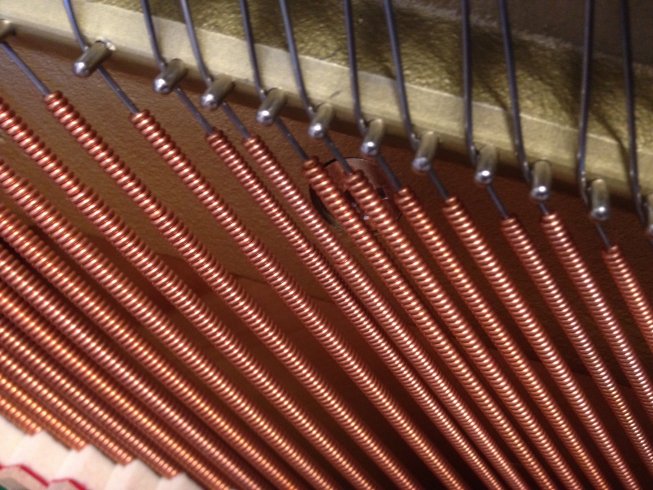There are definitely occasions where a doublewound bichord bass note may help. This situation will usually occur when you are trying to get the Inharmonicity down and the singlewound wrap to core ratios are starting to exceed +- 3.3:1. As the wrap to core ratio gets larger, the string gets stiffer, and the general rule is that the singlewound ratio limit is 3:1 and the doublewound ratio limit is 5:1. However, it is quite common to see singlewound strings on older name brand pianos with ratios up to 4:1. With Pscale, we generally allow up th 3.5:1 on singlewound and 5.5 :1 on doublewound. Below, you will see one doublewound bichord note on a new Kawai Model 506N upright from around 2019. It is the bottom bichord. We are quite pleased to see a manufacturer do a little bit more to blend the transition. Often, the trends go in the opposite, cost cutting, direction. I'm not sure why the length of the winding "steps" are so long as this increases Inharmonicity. |
|
You can definitely hear the improvement while at the piano but it is a little harder to hear in the video. Just remember that the lowest bichord is doublewound. While the highest unichord sounds slightly better than the doublewound bichord, the two single wound bichords just above have a slightly "stiffer" or "choked" sound. See if you can hear it in the videos to the right. |
|
|
|
